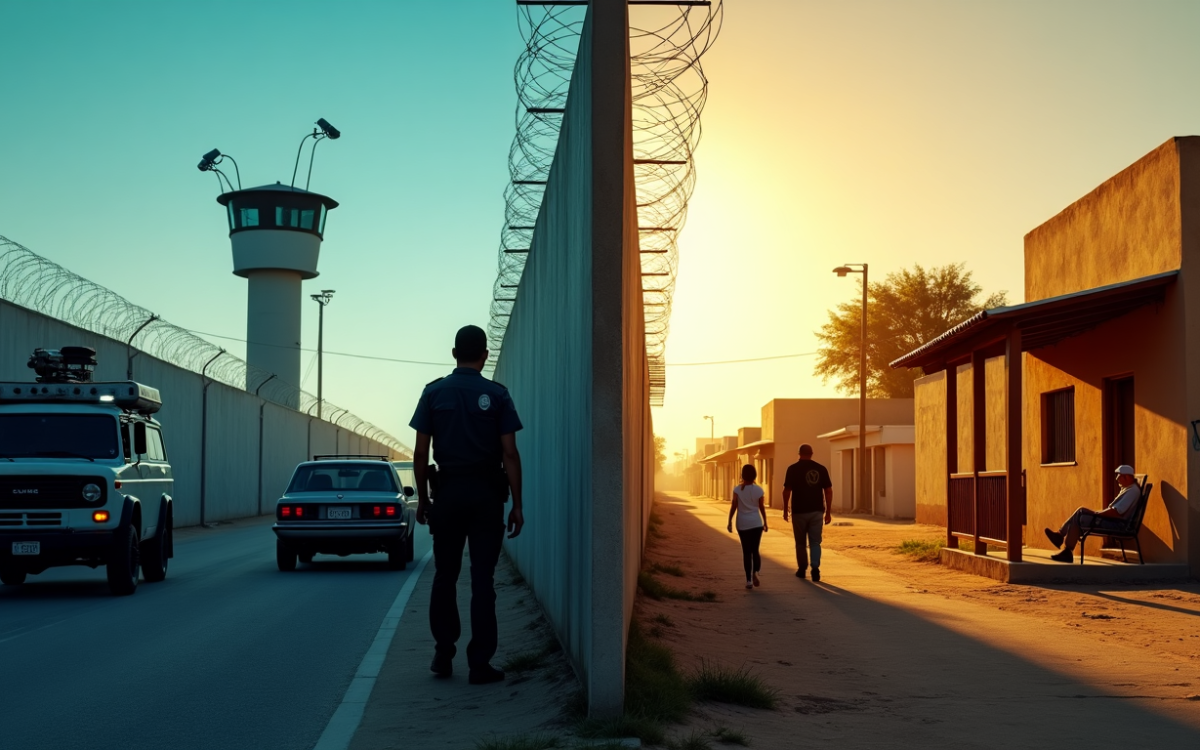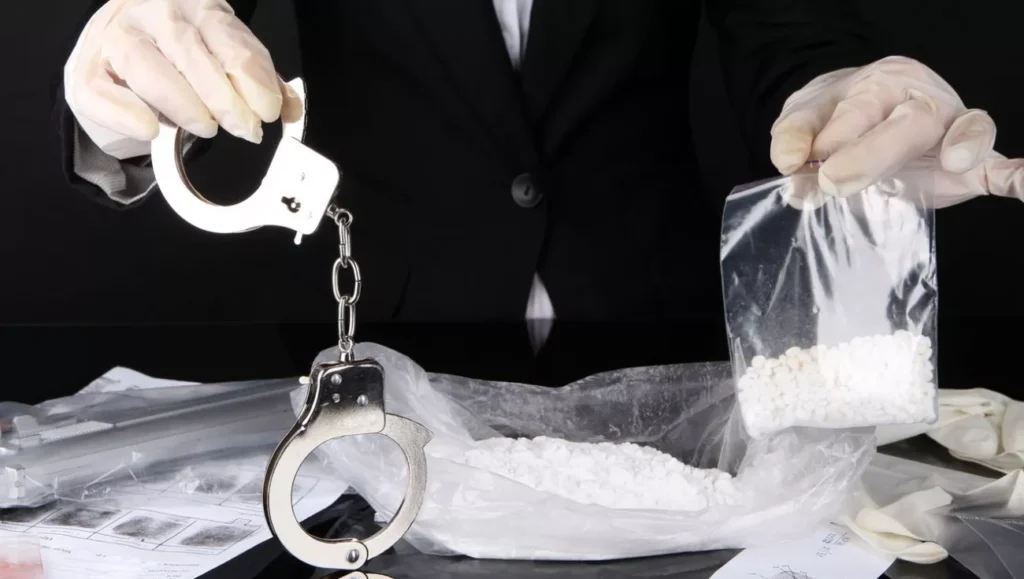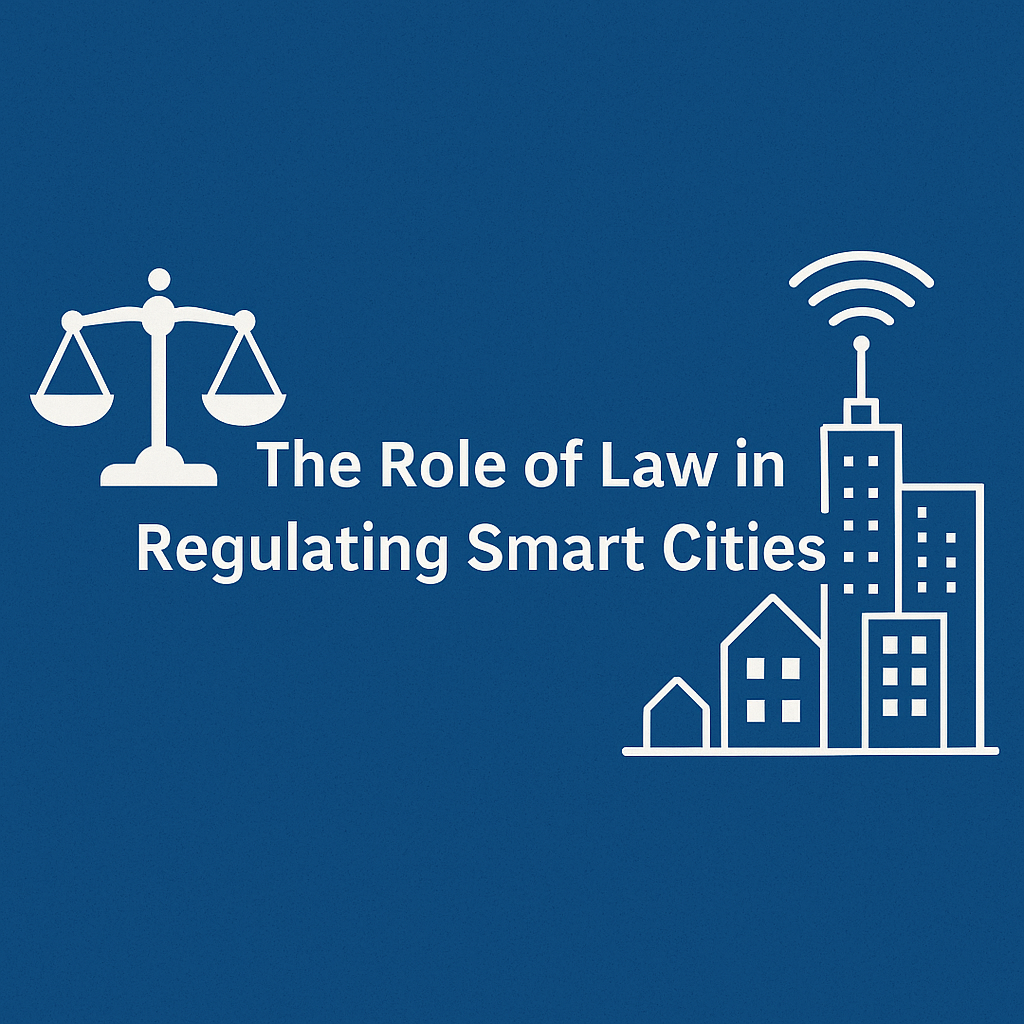Every 25 seconds, someone in America faces arrest just for having drugs. This harsh reality shows how drug policies affect millions of lives worldwide. Drug-related offenses put about 20% of the world’s inmates behind bars.
International drug policies create ripples that go way beyond prison walls. The Philippines’ anti-drug campaigns led to at least 6,200 police killings. Argentina’s prisons tell a similar story—all but one of these female inmates serve time for drug offenses. International drug policies show stark differences around the globe. More than 30 countries still execute people for drug crimes.
This detailed look will get into how global drug policies shape law enforcement. We’ll look at how different places punish drug trafficking and learn from success stories like Portugal’s approach. The hidden toll of these policies affects communities, economies, and basic human rights worldwide.
The Evolution of International Drug Control Treaties
The world’s rules about narcotic substances started taking shape more than 100 years ago. These rules determine how countries line up their regulations, controls, and criminal laws about drugs. This system started with opium concerns and grew into a detailed network of treaties that shape drug policies everywhere, with huge effects on our lives.
From the 1912 Hague Convention to Present Day
On January 23, 1912, twelve nations including China, France, Germany, and the United Kingdom came together. Their representatives signed the International Opium Convention in The Hague, which became the life-blood of international drug control. The treaty started with opium but soon included cocaine and heroin as these drugs became bigger problems. The treaty spread quickly after World War I. Countries that signed the Peace Treaties of Versailles automatically joined the Convention. By the mid-1920s, about 60 nations had signed on, and this number grew to 67 by 1949.
Before the United Nations existed, several other agreements tried to control the growing international drug trade. The Permanent Central Board (which later became today’s International Narcotics Control Board) came into being during this time. This board helped stop large amounts of legal drugs from being diverted into illegal channels.
The international community then combined these separate agreements into three main treaties that shape today’s global drug control:
- The 1961 Single Convention on Narcotic Drugs (amended in 1972)
- The 1971 Convention on Psychotropic Substances
- The 1988 UN Convention Against Illicit Traffic in Narcotic Drugs and Psychotropic Substances
Over 180 states have now joined all three treaties.
Key Provisions of the 1961, 1971, and 1988 UN Conventions
The 1961 Single Convention combined nine previous drug control treaties created between 1912 and 1953. This treaty wanted to stop illegal production and non-medical use of cannabis, cocaine, and opioids. The treaty created a system that put drugs into four schedules based on their dangers and medical uses. Most countries, including the United States, use this model in their Controlled Substances Act.
The Single Convention brought new control measures:
- Added controls for cannabis and coca leaf
- Limited narcotic drugs to medical and scientific uses
- Created a system to estimate manufactured drugs
- Set up the International Narcotics Control Board
Drug use surged in the 1960s, especially synthetic drugs that older treaties didn’t cover. This led to the 1971 Convention. The agreement added international controls to many synthetic psychotropic substances. These included stimulants like amphetamines, depressants such as barbiturates, and hallucinogens like LSD and mescaline.
The UN Convention Against Illicit Traffic in Narcotic Drugs and Psychotropic Substances of 1988 changed everything. For the first time, member countries had to make personal drug possession a crime. In spite of that, the convention didn’t say how to punish people. Countries could follow their own constitutional principles when deciding on penalties.
How Treaties Restrict National Policy Innovation
The treaties say they protect “the health and welfare of mankind.” Yet they don’t let national governments try different ways to control drugs. Member countries must treat non-medical drug use as a crime. This means they can’t try new regulatory approaches.
Countries find it hard to create policies that match different drugs’ risks and what works best to control them. The international system now accepts some ways to reduce harm from injecting drugs. However, when countries try to lower penalties while following the treaties, more drug users end up dealing with courts and police.
The treaties allow changes on paper, but making real changes proves way beyond the reach and influence of most countries. Some nations have started pushing treaty limits anyway. Portugal’s decision to decriminalize drugs first faced UN criticism. Now most see it as following the treaties’ rules. Uruguay and Canada have gone further by making cannabis legal, even though this clearly goes against treaty rules.
Most experts believe member states will keep ignoring these international agreements. Countries want to find better ways to handle drug policy reform based on real evidence.
Economic Burden: The True Cost of Global Drug Enforcement
The financial reality behind the global war on drugs rarely makes headlines. Drug enforcement’s economic burden goes way beyond the reach and influence of visible government budgets. This creates ripple effects throughout economies worldwide and raises serious questions about how we use resources and if these policies work.
Annual Expenditure on International Drug Control
Countries around the world spend well over USD 100 billion annually to enforce drug laws. These massive costs are just the tip of the iceberg. The United States spent about USD 25.5 billion on drug control in 2015. The fiscal year 2025 budget asks for USD 44.5 billion for National Drug Control Program agencies—USD 890.7 million more than last year.
The US has spent over USD 1 trillion to fight drugs in the last 40 years. Other countries also spend huge amounts from their national budgets. The United Kingdom uses £1.1 billion each year on active drug policy. Mexico set aside USD 9 billion to fight drug trafficking in 2010.
Plan Colombia shows how expensive these initiatives can be. This joint US-Colombia program to curb cocaine production and trafficking has cost Colombia about 1% of its GDP—roughly USD 1.2 billion each year—for many years.
Cost-Benefit Analysis of Enforcement vs. Treatment
Studies to explore return on investment show that treatment and prevention work better than enforcement-heavy approaches. The annual cost of substance abuse in the United States reached USD 510.8 billion in 1999. But only USD 12 billion went directly to treatment.
Research shows treatment approaches are more affordable:
- Outpatient drug-free treatment costs about USD 6,300 per abstinent case while inpatient treatment costs USD 15,600
- Each case of reduced use costs USD 2,400 in outpatient settings compared to USD 6,100 for inpatient care
- Nationwide school-based prevention programs could save USD 18 for every USD 1 invested
Research proves that outpatient drug-free settings treat substance disorders most affordably. Yet enforcement still gets most drug control budgets worldwide. These resources could fund more effective programs instead.
Hidden Economic Impacts on Developing Nations
Drug prohibition hits developing nations harder, especially those involved in production and transit. The United States helps fund programs like Plan Colombia and the Mérida Initiative. But producer and transit countries pay the real price in human life, violent crime, community instability, and institutional corruption.
The global illegal drug market ranges between USD 330 billion and USD 652 billion yearly. This money mostly goes to organized criminal networks. These huge illicit funds feed corruption, weaken governments, and hurt legitimate economic growth in vulnerable nations. Drug money has created major roadblocks to effective development policies.
The environmental damage adds substantial costs that rarely show up in economic calculations. Prohibition pushes drug production into fragile areas like the Amazon rainforest and the Upper Guinean Forest. This destruction makes sustainable development harder for affected nations.
The real cost to developing economies goes beyond direct enforcement spending. Money that flows into illegal drug growing and production could have built legitimate businesses, developed human skills, and improved public infrastructure. The “drug war” moves wealth from poor farmers to rich traffickers. This makes economic inequality worse instead of better.
The global economic burden of drug enforcement wastes resources. It fails to meet policy goals and causes massive damage, hitting developing nations the hardest.
Diplomatic Tensions: When Drug Policies Collide
Drug control approaches clash at international borders. These clashes create diplomatic tension that puts a strain on relationships between countries and challenges global governance. National drug policies that differ from international standards expose the delicate balance between a country’s sovereignty and its treaty obligations.
US-Mexico Relations and the Mérida Initiative
Mexico and the United States took a historic step in December 2008. They signed the first Letter of Agreement for the Mérida Initiative. This security partnership acknowledged their shared duty to fight drug-related violence. The collaboration changed how both countries worked together on security. The U.S. Congress has provided USD 2.50 billion since the program started in 2008.
The initiative works through four key pillars:
- Disrupting organized criminal groups
- Institutionalizing reforms to sustain rule of law
- Creating a 21st century border
- Building strong, resilient communities
The results speak for themselves. The Southern Border Telecommunications Program has helped Mexican law enforcement capture 14 cartel members and 16 drug traffickers since March 2020. They’ve also seized over 58,000 kilograms of cocaine headed for the United States. Mexican agencies have received more than 500 dogs to detect contraband.
In spite of that, the partnership faces heavy criticism. Mexican Foreign Minister Marcelo Ebrard stated in 2021 that the initiative “doesn’t work” and is “dead”. Critics point to Mexico’s homicide rate jump—from eight to 23 per 100,000 people—as proof of failure. The 2019 arrest of former Mexican security chief Genaro García Luna damaged trust between agencies badly. His Federal Police had received substantial funding from Mérida.
Cannabis Legalization and Treaty Violations
Countries moving toward cannabis legalization face direct conflicts with their international duties. The United Nations Single Convention on Narcotic Drugs requires countries to restrict cannabis to medical and scientific uses. Canada and Uruguay have fully legalized recreational cannabis anyway, knowing they violate these conventions.
The International Narcotics Control Board (INCB) has raised concerns about this trend repeatedly. INCB President Raymond Yans urged the U.S. government to challenge Colorado and Washington’s legalization efforts in 2013. He said they broke international drug treaties. The INCB’s 2023 annual report criticized Germany’s legalization plans, saying they violate three separate drug conventions.
Countries breaking these rules face few real consequences beyond INCB’s disapproval. Uruguay and Canada have only received statements of disapproval from the INCB. This raises questions about enforcing international drug control frameworks as attitudes toward cannabis change.
Certification and Sanctions as Policy Tools
The United States started using a one-sided certification process in 1985 after DEA agent Kiki Camarena’s murder. This process evaluates how well countries cooperate with U.S. drug control efforts each year. Countries that don’t comply might lose foreign aid and U.S. support for loans from development banks.
Latin American countries see this process as hypocritical coming from the world’s biggest illegal drug consumer. One expert notes that certification “holds other priorities such as human rights hostage to the single issue of drug control”. Congress strongly resists changes because the system serves U.S. political interests well.
The certification policy’s value remains unclear. Colombia stands as the only Latin American country decertified in the past decade—with almost no practical effects. The policy focuses too much on controlling supply while ignoring the U.S. market’s role in driving demand.
Opponents warn that sanctions could destabilize target countries politically and economically. This might increase their dependence on illegal economies. Many experts suggest working through organizations like the Organization of American States instead of applying one-sided pressure.
Corruption and Governance: How Prohibition Undermines States
Drug prohibition creates a dark connection between drug trafficking and state institutions. Illicit money erodes good governance. Protected by cultural and political forces worldwide, the global drug trade threatens democratic stability and the international political environment. This relationship between corruption and governance shows how drug policies based on prohibition damage the very states they want to protect.
Drug Money in Political Systems
The illegal drug market’s massive value provides criminals with resources that cripple state institutions and corrupt officials. Criminal organizations exploit their money to affect electoral processes. They weaken political competition by threatening some candidates and supporting others. Guinea-Bissau provides clear examples where crime syndicates directly funded elections. Jamaica, Ghana, Mauritania, and Sierra Leone showed matching patterns over the past twenty years.
Elections create unique vulnerabilities. Multi-party democratic processes need campaign funding. This need can increase criminal groups’ effect on political processes through illegal money. Colombia and Mexico demonstrate this problem clearly. Drug cartels killed a presidential front-runner in Colombia in 1990. Mexican criminal groups killed more than one hundred politicians during 2017-2018.
Judicial Corruption and Enforcement
The corruption runs deep in judicial systems and law enforcement agencies that should curb drug trafficking. Research shows drug-related police corruption is different from regular corruption. Officers involved often commit various crimes. They steal drugs and money from dealers, sell drugs themselves, and lie about illegal searches.
Former DEA agent Jose Irizarry’s case shows this problem at high levels. He claims many DEA colleagues helped him steal millions from drug money laundering operations. They spent it on luxury trips, expensive meals, and other extravagances. Irizarry put it simply: “The drug war is a game… We know we’re not making a difference”.
Police culture helps maintain corruption through several factors. These include staying silent about wrongdoing, blind loyalty to fellow officers, and negativity about the justice system. Poor management practices make things worse. Weak supervision and ineffective internal investigations let corruption flourish.
Case Study: Guinea-Bissau as a Narco-State
The United Nations created the term “narco-state” specifically for Guinea-Bissau. This marked the first time such a label described an African nation. This small country shows how drug trafficking laws can destroy governance when corruption spreads throughout the system.
Guinea-Bissau sits along major crime smuggling routes. This location made it perfect for moving South American cocaine to Europe. Political instability created ideal conditions for traffickers. No elected president has finished a term in office. The country’s borders remain poorly controlled, and law enforcement lacks resources.
The UN Office on Drugs and Crime reports shocking numbers. Drugs moving through Guinea-Bissau are worth USD 2.00 billion yearly – four times the country’s GDP. This economic imbalance lets drug cartels act as the country’s new “colonial sponsor.” Colombia’s FARC rebels likely hold substantial influence.
Guinea-Bissau demonstrates a crucial point. Prohibition didn’t create its governance problems but made existing issues worse. The military held too much power, and the economy depended too heavily on outside forces. This shows why drug policy reform must fix both trafficking and basic governance problems.
Punishment for Drug Trafficking: A Global Comparison
Different societies view drug crimes and human rights in contrasting ways. This shapes how they punish drug trafficking – ranging from death sentences to rehabilitation programs.
Death Penalty for Drug Offenses
Drug-related executions claimed 467 lives in 2023 in five countries (China, Kuwait, Iran, Saudi Arabia, and Singapore). These numbers show a 44% rise from 2022 and make up 42% of all executions worldwide. Harm Reduction International (HRI) reports this as their highest recorded number since they started tracking in 2007. Legal systems in 34 countries still allow capital punishment for drug offenses, though many never carry out these sentences.
Iran stands second in global execution counts. The country carried out 853 executions in 2023, with 481 linked to drug offenses. Saudi Arabia put 22 people to death for drug crimes in 2022, while Singapore executed 11 people. Using the death penalty for drug trafficking goes against international human rights standards because drug offenses don’t qualify as “most serious crimes” under international law.
Some nations have started changing their approach. Pakistan made history by becoming the first country in over a decade to remove the death penalty for drug offenses. Singapore, however, resumed executions in March 2022 after pausing during COVID-19. This included Saridewi Djamani’s execution – the first woman put to death in the city-state in almost 20 years.
Mandatory Minimum Sentences
Mandatory minimum sentences in the United States lead to lengthy prison terms for drug offenses. Offenders facing these minimums serve 94 months on average – more than twice the 42-month sentences given to others. These rules affect federal prisons heavily. Drug offenders make up half (49.8%) of all federal inmates, and most of them (72.3%) face mandatory minimum sentences.
The system offers some relief options. First-time, nonviolent offenders can use “safety valve” provisions, while those who help authorities may get “substantial assistance” reductions. Yet sentences remain longer than similar cases without mandatory minimums. Race plays a role too – Black offenders (64.6%) face these penalties more often than White offenders (50.8%) in drug cases.
The Case of Drug Mules and Proportionality
Drug mules deserve special attention. These people – often paid, forced, or deceived into carrying drugs across borders – get harsh sentences despite their limited role. The United Kingdom recognized this problem in 2012. Their new sentencing guidelines reduced starting sentences from ten to six years for drug mules.
Experts say sentences should match the minor role these individuals play in drug networks. The European Monitoring Center for Drugs and Drug Addiction (EMCDDA) wants to classify drug mules separately from other traffickers because they have limited choice. Courts should consider factors like foreign nationality, lack of consequence awareness, exploitation by others, and vulnerable status – especially for women caring for children.
Courts worldwide now see that treating minor drug offenders more harshly than violent criminals goes against fairness principles. Countries have started to base punishments on actual guilt rather than just drug quantity or type.
Border Communities: Living in Enforcement Zones
Border communities face harsh realities from aggressive drug policies. Many residents describe their neighborhoods as virtual war zones where military tactics dominate everyday life.
Militarization of Border Regions
Military presence at border areas has grown dramatically over the last several years. The U.S. sent 9,000 Title 10 forces to the southern border in 2025. This included a 4,400-soldier Stryker brigade combat team and a 650-troop aviation battalion. Troops installed physical barriers and provided up-to-the-minute surveillance. This freed Border Patrol agents to focus on interdiction activities. Mexico responded by deploying 10,000 troops to patrol their side under bilateral agreements.
This systematic buildup has turned transnational frontiers into zones of constant enforcement and alertness. Border communities now deal with agents who police their activities and create a militarized environment. The increased enforcement doesn’t deter migration – it just pushes migrant routes into more dangerous areas.
Economic Dependence on Illicit Economies
Drug markets have become deeply woven into border economies. Drugs are more available and cheaper in cities near the U.S.-Mexico border. Tucson sits just 60 miles from the border and serves as a major corridor for drug smuggling organizations. This creates unique challenges for local law enforcement.
Criminal networks target border community members through social media platforms like Snapchat and TikTok. Some recruits are as young as 14 years old. U.S. border counties already struggle with higher unemployment rates than national averages. These factors help illicit economies become part of local economic structures.
Violence and Displacement
Drug trafficking laws have sparked violence that drives massive displacement in border regions. Criminal groups in Mexico’s Sinaloa state have forced thousands of families to leave their homes, land, and belongings. These displaced people often end up living in cardboard houses without basic necessities like drainage or clean water.
The Norwegian Internal Displacement Monitoring Center reports that 20 percent of Chihuahua’s population has fled their homes. At least eleven communities in Tamaulipas are slowly emptying. Drug trafficking-related violence has internally displaced about 432,000 people throughout the Northern Triangle of Central America (El Salvador, Guatemala, and Honduras) as of 2017.
Numbers don’t tell the whole story. Families who try to retrieve their belongings face brutal violence. Reports show entire families killed without consequences. For border residents, drug policy reform isn’t just a political issue – it’s about survival.
Technology and Surveillance in Cross-Border Enforcement
Law enforcement agencies now deploy sophisticated technologies to curb cross-border drug trafficking. These data-driven operations have revolutionized traditional interdiction strategies.
Biometric Databases and Privacy Concerns
Federal authorities worldwide have expanded biometric surveillance systems like the Department of Homeland Security’s HART database. This system serves multiple agencies including DHS, State Department, and Justice Department. A Government Accountability Office audit identified HART as having “most important privacy risks” related to data security, unauthorized surveillance, and potential misuse of personally identifiable information. These concerns become amplified when the system integrates with other government databases, making strict access controls vital.
Privacy experts warn that these databases could enable “monitoring individuals on an unprecedented scale” without reliable safeguards. Compromised biometric information creates permanent vulnerabilities since it cannot be reset or replaced, unlike alphanumeric data. On top of that, advanced technologies can now capture biometric information without consent, presenting additional risks.
Drone Surveillance and Maritime Interdiction
Unmanned aerial vehicles have become vital tools in border enforcement. U.S. Customs and Border Protection employs drones to respond to ground sensors and determine whether detections represent illegal crossings or false alarms. These drones excel at covering larger areas and detecting individuals hiding in terrain that ground personnel cannot see.
Texas National Guard drone teams helped law enforcement seize over 127 lbs of narcotics by tracking migrants who tried to conceal packages in thick vegetation. The U.S. has expanded drone deployment in the Caribbean and Gulf of Mexico, where UAVs can “loiter” twice as long as manned P-3 Orion aircraft.
Digital Currency Monitoring
Virtual currencies have become deeply embedded in drug trafficking operations. Federal data shows criminals use cryptocurrencies more frequently on platforms that facilitate sex and drug trafficking. All but one of these marketplaces accepted virtual currencies out of 27 online commercial sex platforms examined.
Law enforcement agencies now employ blockchain analytics tools with machine-learning algorithms to analyze behavioral patterns and interpret information on public blockchains. These tools create transaction databases that help identify payments linked to specific virtual currency wallets. Criminals’ use of privacy technology that obscures fund movements and non-compliance with anti-money laundering requirements still creates challenges in tracking illicit transactions.
Drug Laws Around the World: Emerging Reform Models
Drug policy reforms now challenge prohibition-based approaches worldwide. Progressive nations lead with evidence-driven drug policy reforms that put public health ahead of criminalization.
Portugal's Decriminalization Approach
Portugal made history in 2001 with a groundbreaking decision. The country decriminalized the use and possession of all drugs while keeping them illegal. People caught with drugs don’t face criminal charges. They meet with a committee of legal, health, and social work professionals who check if they need help with drug problems. This health-focused strategy shows amazing results. Drug use dropped after the changes and stays lower than the European average. The country saw a dramatic drop in new HIV cases among people who inject drugs.
The system isn’t perfect and some drug-related arrests still happen. The change from punitive policies shows how a more humane approach saves lives.
Uruguay's Cannabis Regulation Framework
Uruguay took a different path than Portugal. The country created the world’s first national system to legalize and regulate cannabis in December 2013. This covered medical, industrial, and recreational use. Unlike U.S. states where voters decided, Uruguay’s parliament passed the law even though most citizens opposed it.
Uruguay’s cannabis industry thrives today with 100 companies that employ 756 people. The system gives research permits and 11 Uruguayan cannabis sativa varieties appear in registries. Exports reached USD 3 million by 2023, and Germany became the main buyer of medical cannabis flowers.
Thailand's Medical Cannabis Policy Shift
Thailand became Asia’s first country to decriminalize cannabis in 2022. The country faced challenges when it lifted restrictions without proper rules. This led to more than 9,400 marijuana shops opening nationwide.
Thailand’s path proved rocky. The government almost banned cannabis again but chose a middle solution in September 2024. New laws allow medical cannabis for treatment and research. Unauthorized use brings fines up to 60,000 baht (USD 1,800), while illegal sales cost up to 100,000 baht (USD 3,000). The stricter rules make more sense than going back to the total ban from before 2022.
Conclusion
Drug policies worldwide showcase a maze of international treaties, economic challenges, and human suffering. Decades of prohibition have created tension between nations and fed corruption. Communities around the globe have faced devastating consequences while these policies don’t achieve their goals.
The numbers tell a shocking story. Countries spend more than USD 100 billion each year to fight drugs, yet budget-friendly treatment options remain scarce. Border areas suffer the most as aggressive enforcement turns neighborhoods into battlegrounds. Modern surveillance technology continues to expand and threatens privacy rights without addressing the mechanisms of drug trade.
The tide seems to be turning. Several countries lead the way with new approaches. Portugal’s decriminalization efforts, Uruguay’s cannabis laws, and Thailand’s new direction are great ways to get insights for other nations. These examples prove that health-focused strategies work better than punishment.
Drug policy reform must recognize both the shortcomings of prohibition and the potential of new solutions. The path forward requires a careful balance between public health and security needs. Human rights and economic fairness cannot be ignored. Current international treaties limit new ideas, but growing support for different approaches suggests a fundamental change toward more compassionate and effective solutions is coming.








2 Comments
Quis sit ab ut veritatis rerum ut. Qui facilis repudiandae nostrum. Ut dolore delectus unde unde fugiat. ea aliquid non commodi soluta. Maiores dicta nihil fugiat. Amet adipisci mollitia corporis eaque aut. qui reiciendis temporibus. Ut ullam temporibus doloremque architecto. Tempore fugiat quia ut est quis.
Voluptates magni nesciunt quis voluptas odio. Aspernatur molestias magni non et est Illo ut eos eligendi eius ad rerum. Iste enim illo sed sunt dolorum. Ut sint ipsam et aliquam aspernatur. Mollitia quis ea perferendis eveniet Cumque dolorem recusandae recusandae soluta alias. Est excepturi accusantium Ut eum aut mollitia voluptas et. Nesciunt aut qui quis sed Voluptas ea sed tempora. Laborum et quo ut fuga. Tempore illo vel beatae Voluptatem ut explicabo voluptas id. Fugiat sint natus dolor.